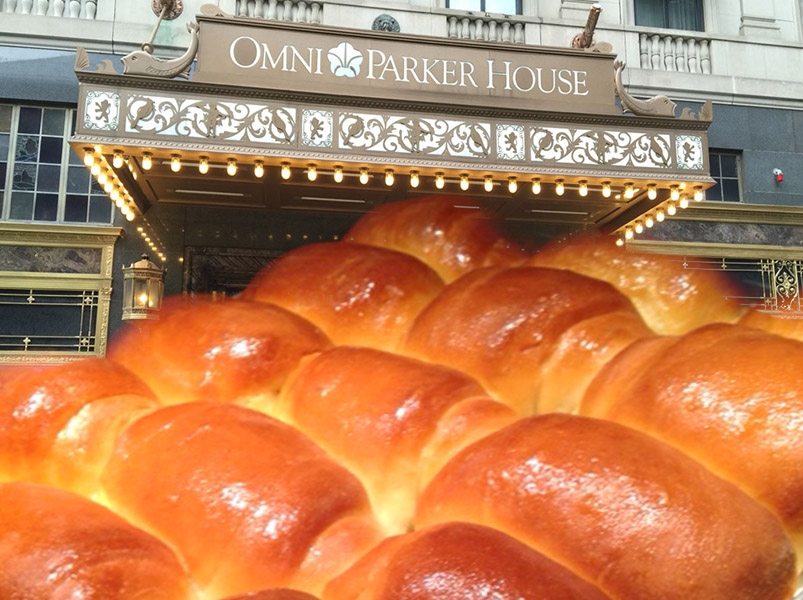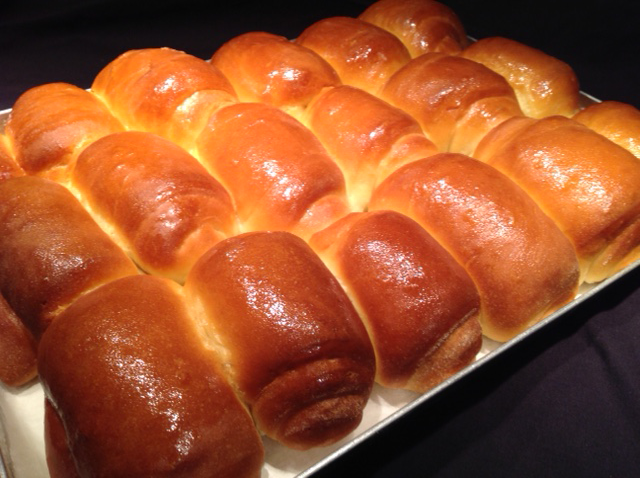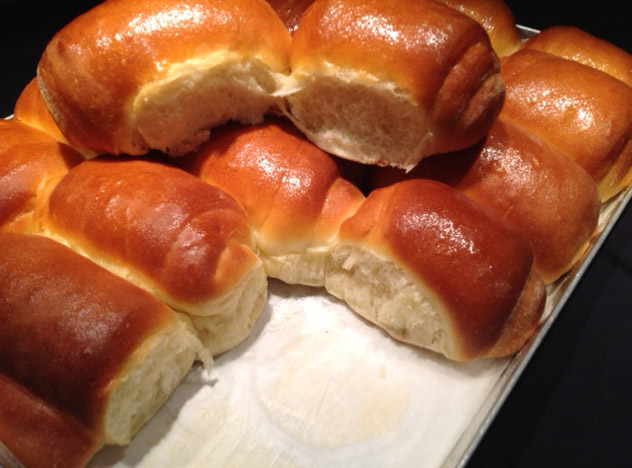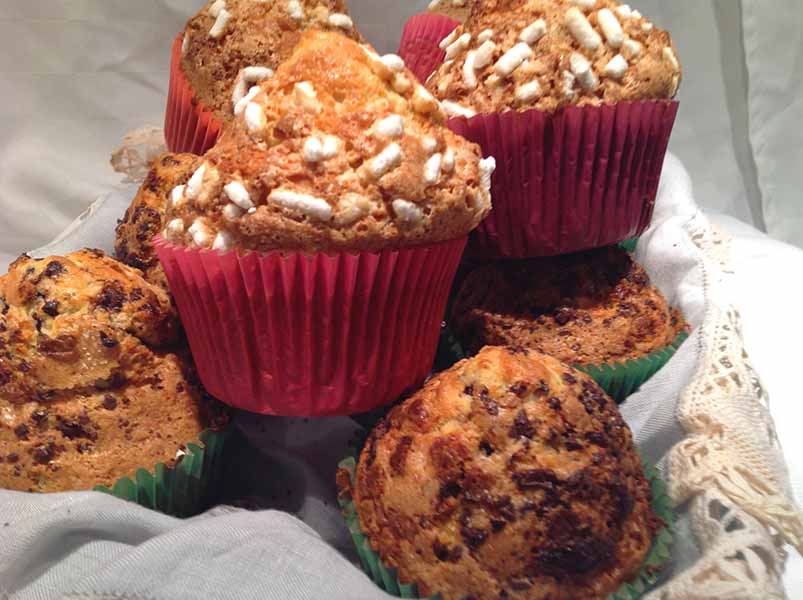Culinary Stories: Bread in the world

Welcome to our usual appointment with our culinary stories bread in the world: Parker House Rolls.
Today we want to take a journey... in the world of the bread that is created in various parts of the world.
Every country has its own tradition regarding the shape, bread-making method, taste, and its own specialty in the use of ingredients and different preparation, but the flavours are always unique.
We know that, although bread is a simple food, it is fundamental to the nutrition of various populations, except for those who for one reason or another cannot farm, for example the Eskimo.
In cold countries, in fact, bread made with rye is more common because this grain resists better in cold climates, while in the temperate European climates we find bread made with wheat flour.
White, black, hard, soft, simple or flavoured, everyone loves this central element of man’s diet.
From the mid-1900s the use of rye, which is nutritious, tasty and preserves well, spread throughout Germany.
One of the most famous German breads is the Bauernbrot, made with water, flour, yeast, salt and sometimes the addition of sunflower seeds and dried fruits.
Oat flour, which has a high protein and lipid content, is widely used in many parts of Great Britain, it being suitable in cold climate countries.
In France we find the famous baguette, a national symbol, crunchy on the outside and soft on the inside, made with white wheat flour.
In China, where people prefer rice to bread, small steam-cooked rolls are made.
In the Middle East bread represents an actual tool used to gather food, and their bread is flat yet soft and leavened.
The most popular bread eaten in Russia is black bread, while in some of the Eastern countries millet is quite commonly used in bread making.
In India, but also in some parts of Central and Southeast Asia, we find the delicious Naan bread made with wheat and cooked in the typical tandoori.
In Japan there is the famous fried Curry Bread which is sometimes baked instead of fried, and is shaped like a ring and covered with breadcrumbs.
In Brazil one can taste the small, round, delicious rolls filled with cheese called Pao de queijo.
Jamaica’s traditional Bammy bread is flat, cooked on a hot griddle and contains cassava, a popular South American tuber.
In Norway we find Lefse, a bread that resembles a flour tortilla but made with potatoes, eaten either sweet or savoury and stuffed.
In Finland, instead, there is the Dark Rye bread, which is thick, a bit gummy, slightly sour and delicious.
In Colombia and Venezuela there are delightfully soft rolls called Arepas that resemble tortillas and are eaten filled with cheese and meat.
The Pan Cubano is made with lard and resembles French bread, shaped like a long, thin loaf.
In Eritrea there is the Himbasha, a slightly sweet bread to which lots of cardamom seeds are added.
In many African countries there is sesame bread and Teff bread.
In America, before the European conquest, cornmeal was used and in the mountainous areas quinoa was, and still is, used today.
There are many different types of bread that can be enjoyed in Italy, but we will talk more about these in our next article. For now, we will mention one of our favourites, the Altamura bread, which has a fantastically crunchy crust and is considered the king of durum wheat flour bread.
The flour is mixed with sourdough natural yeast, water, salt and is left to rise for a long time. In Italy, in Sant'Angelo Lodigiano, a lovely agricultural city in the region of Lombardia, there is the Museo del Pane (bread museum) hosted in the halls of the 13th century Castello Visconteo.
There is also the Museo Etnografico di Nuoro (ethnographic museum) in Sardegna, where one can admire a collection of various types of bread that are typical of the island.
As we can see there are many different types of bread, all different, some leavened and some not. In the western world there is the common use of natural rising agents which is unfortunately used only in homes and by restaurant owners but not used on a wide-scale because this method is slow and needs natural biological processes that are more delicate and complicated than the only biochemical reaction.
Bread made using natural rising agents have a unique smell and flavour, and the glycemic index is lower than that in traditional bread.
It preserves longer, is nutritious even when stale, is more filling thanks to the fibre content, and it is also easier to digest thanks to the enzymatic process during fermentation.
Culinary Stories: Bread in the world end the inventor Omni Parker House
Today we want to share with you a very interesting recipe that originated in Boston towards the end of the 1800s.
 The legend says that the baker of a hotel called Parker House, today known as Omni Parker House, in a moment of anger, threw what was left of the bread he was trying to make into the oven.
The legend says that the baker of a hotel called Parker House, today known as Omni Parker House, in a moment of anger, threw what was left of the bread he was trying to make into the oven.
When he pulled it out after a short while, he discovered that they had taken on the shape of little purses and were light and puffy on the inside but crunchy and buttery on the outside.
He decided to create what he called the Parker House Rolls which today are a trademark of the city of Boston and the New England area in the United States.
This hotel is one of the oldest in the USA and was founded by Harvey Parker in 1855. Many famous people have stayed there, Henry David Thoreau, Charles Dickens, Judy Garland, Bill Clinton and many more. The staff of the famous kitchen of the Parker House Hotel is credited with having invented the renowned Boston Cream Pie, the official dessert of Massachusetts.
In 2015 this legendary hotel celebrated its 160th anniversary and the Parker House Rolls are still today the feather in their cap.
The Parker House Rolls can accompany soups and meat,s but they’re also delicious with a dab of butter and jam at breakfast. The first recipe ever to be found in print was in 1874 in the New Hampshire Sentinel, and since then it has become one of the favourite breads of many American families and restaurant owners.
Recipe Parker House Rolls for 20 rolls
Ingredients for Parker House Rolls
:
 300 gr of milk kept at room temperature
300 gr of milk kept at room temperature
90 gr of butter + 20 gr for the brushing
100 gr of sugar
20 gr of bread yeast (or 150 of natural yeast)
3 eggs
1 tsp of salt
800 gr of strong flour
Preparation for Parker House Rolls
We heat 150 grams of milk in a pot and add the diced butter and the sugar, mixing well. We let it sit to cool at room temperature, then in a separate bowl we put the remaining milk and add the yeast.
We add eggs and salt to the pot in which we melt the milk, butter and sugar, and after mixing for a while we add the flour and pour in the milk and yeast slowly, mixing all the ingredients really well.
We start kneading the dough and let it sit to rise at room temperature, covered with plastic wrap, until it doubles in size. We roll it out with a sprinkling of flour then start shaping our rolls.
There are so many different types of Parker House Rolls… round, rectangular, closed or rolled, but we like the rolled version.
 We shape our dough into a large rectangle then cut 20 smaller rectangles and roll each one.
We shape our dough into a large rectangle then cut 20 smaller rectangles and roll each one.
We put them in a baking tray and leave them to rise leaving a little bit of space between each one, no more than a centimetre.
After about one hour, when they are nice and fluffy, we bake them at 200° until they are golden brown, about 15 minutes.
We take them out of the oven and brush them with melted butter.
If you wish, you can save them to be eaten later with a meal. . . but we find it difficult to not give in to the temptation biting one of these soft delights immediately and enjoying their full flavour and aroma!
(Foto e English translation di Tina Ferraiuolo & Cristiana Ordioni)
Articolo in italiano:Tutto il Pane nel mondo e il Parker House Rolls
Lissen muffin
